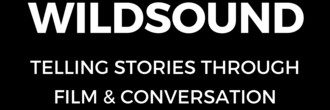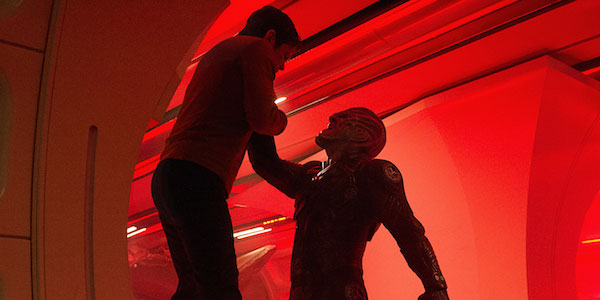Greg D’Auria is very modest as you’ll see when you read this interview. He’s a wealth of knowledge and an amazing storyteller – as he seems to be the last to know this! He has worked in the editorial department on over 30 productions in the last 20 years. His list of credits include: Star Trek Beyond (2016), Eloise (2016), Fast & Furious 6 (2013), Django Unchained (2012), & Kill Bill Vol. 1 (2003). It was an honor to interview him:
Matthew Toffolo: You’ve worked as an Assistant Editor on many big Hollywood productions. What is the role of Assistant/Associate Editor? What is the biggest thing you’ve learned doing this task to help you grow as an editor?
Greg D’Auria: I think the main role of an Assistant is to be a traffic cop for the flow of information into and out of the cutting room. I won’t bore you with the details, but there is a massive amount of logistical and technical skill required to keep track of the hundreds of thousands (sometimes millions) of feet of film shot. Every single frame has to be accounted for. That’s the responsibility of the Assistant. But I’ve only just scratched the surface, because they also have to keep track of all the things that are happening in the editing room from the start of editing all the way through the final delivery of timelines to the D.I. house. Along the way to completion, a lot of departments and vendors constantly need things from editorial and it’s the Assistant’s responsibility to handle those requests. These things can and do vary depending on the size of the project. I’ve also been lucky that some editors would let me handle creative tasks like cutting temp music and sound effects for select scenes. Some were generous enough to let me take a whack at cutting a scene or two. Probably the biggest thing I took from being an Assistant is to embrace flexibility. Obviously no editor is the same and no show is the same. So you take those things into account with each project that you work on. That’s a valuable mindset to have when you dive into the unruly beast that is storytelling.
MT: What film that you’ve worked on has been your most valuable experience?
GD: I’ve taken something away from every show and every editor I’ve worked with. Sometimes it was outright theft.
MT: What is the art to being a great ACTION FILM editor? How is working on this type of film different than a conventional drama film?
GD: Oh, man, I’m not someone who can answer that question. There are so many great editors with a much longer resume who are more qualified to discuss the art of cutting action. But I will tell you a little about my approach because that’ll answer your second question. We’re telling stories. Every scene is a piece of that tapestry. Every shot is like a thread in that tapestry. How do those individual threads work best to tell the story of that scene? What are the objectives of that scene? That’s what I’m trying to figure out. I hope to take an audience on a ride when I cut action. I think the best way to do that is by keeping track of the characters in the midst of whatever action is going on. What are they doing in the scene? How are they reacting? If you connect the audience to the characters, it becomes an immersive experience. I think every film, doesn’t matter what genre, succeeds when it gets to that level. So, outside of the faster tempo of an action beat, I don’t see much difference between action and drama.
PHOTO: Action in “Star Trek Beyond”:

MT: How was the STAR TREK BEYOND experience? There are 3 other editors credited in the main editor credit. How did 4 people collaborate on the film?
GD: The collaboration starts with Justin. He has a clear vision, but he’s never satisfied, he’s always looking to push and explore and refine. There were lots of screenings of the film with the 5 of us. They’re thorough and the floor is always open for us to comment. Armed with new feedback we’d split up, work on our sections with Justin and then do it all over again. I read a review of BEYOND that complimented the seamless editing. The critic was a little surprised this was so given that there were 4 editors. He wouldn’t have been if he saw how expertly Justin works.
MT: What is an editor looking for in their director? What is a director looking for in their editor?
GD: One of the first job interviews my agent sent me on took place at the director’s house. A cool place in the Silverlake area of LA, I remember guitars and photos and paintings were strewn about. It made for a relaxed vibe. The interview was more conversation than formal interview. His cat slinked around us for the first hour, then she made herself at home on my lap for the last half hour. When the interview wrapped up, the director noticed her and said she usually doesn’t take to strangers. The comfort and trust that cat had in me? Hopefully, every director I work with would feel the same. I just don’t want ’em on my lap. But seriously, I think that trust is key. Picture lock is the end of the road. Once the film is released the director has to feel that we’ve explored every avenue, chased every idea and that the finished product is the best it could be.
MT: Is there a type of film that you would love to edit that you haven’t edited yet?
GD: I love Slap Shot. It’s funny, ballsy and full of social insight. Can’t think of many comedies that are set against the backdrop of a blue collar world on the verge of financial collapse. I’d be damn proud to have my name attached to something like that.
MT: What film, besides the ones you’ve worked on, have you seen the most times in your life?
GD: The first two Godfathers, Chinatown, Joe Dirt. Alright, just kidding about that last one.
MT: What suggestions would you have for people in high school and university who would like to get into the industry as an editor?
GD: This is a do as I say not do as I did not response. Be open, be curious, if you can, travel. Read. Listen to music, immerse yourself in the arts. Embrace technology. Get your foot in the door by pursuing internships. If you’re a technological wiz, highly literate and an interesting person, you will find a place in editorial.
MT: Where did you grow up? Was working in the Film Industry something you always wanted to do?
GD: Palisades, New York, a suburb 20 minutes northwest of Manhattan. Growing up I aspired to play pro basketball, my body had other ideas. I’ve always loved movies, but who gets to do that for a living? The summer before I was going to start law school, three friends, Keith, Gregg and Peter, moved out to Hollywood. I didn’t join them. During that summer I gradually realized I had no f-cking aspirations to pursue law as a career. So, a year later I followed them out to LA. I’ve never regretted that choice.
****
Interviewer Matthew Toffolo is currently the CEO of the WILDsound FEEDBACK Film & Writing Festival. The festival that showcases 10-20 screenplay and story readings performed by professional actors every month. And the FEEDBACK Monthly Festival held in downtown Toronto on the last Thursday of every single month. Go to www.wildsound.ca for more information and to submit your work to the festival.


Reblogged this on WILDsound Writing and Film Festival Review.
LikeLike
Reblogged this on WILDsound Writing and Film Festival Review.
LikeLike
Reblogged this on First Scene Screenplay Festival.
LikeLike
Reblogged this on Action/Adventure Film & Screenplay Festival.
LikeLike
Reblogged this on Under 5 minute film festival.
LikeLike
Reblogged this on TV Screenplay Festival. Submit Today..
LikeLike
Reblogged this on FEEDBACK Animation Film & Screenplay Festival.
LikeLike
Reblogged this on Comedy FESTIVAL.
LikeLike
Reblogged this on Festival for Drama in Film, Screenplays, Novels.
LikeLike
Reblogged this on Festival Reviews.
LikeLike
Reblogged this on Festival for HORROR.
LikeLike
Reblogged this on FESTIVAL for FAMILY.
LikeLiked by 1 person
Reblogged this on Fantasy/Sci-Fi FILM & WRITING FESTIVAL.
LikeLiked by 1 person
Reblogged this on LOS ANGELES Feedback FILM FESTIVAL.
LikeLiked by 1 person
Reblogged this on Crime/Mystery Film & Writing Festival.
LikeLiked by 1 person
Reblogged this on Romance Film & Screenplay Festival – Submit your romance genre screenplay or short film and get it showcased at the FEEDBACK Film Festival.
LikeLiked by 1 person
Reblogged this on Thriller/Suspense Film and Writing Festival.
LikeLiked by 1 person
Reblogged this on WILDsound Writing and Film Festival Review.
LikeLiked by 1 person
Reblogged this on WILDsound Writing and Film Festival Review.
LikeLiked by 1 person
Reblogged this on WILDsound Writing and Film Festival Review.
LikeLiked by 1 person
Reblogged this on WILDsound Writing and Film Festival Review.
LikeLiked by 1 person
Reblogged this on WILDsound Writing and Film Festival Review.
LikeLike
Reblogged this on WILDsound Writing and Film Festival Review.
LikeLike
Reblogged this on WILDsound Writing and Film Festival Review.
LikeLike
Reblogged this on WILDsound Writing and Film Festival Review.
LikeLike
Reblogged this on WILDsound Writing and Film Festival Review.
LikeLike
Reblogged this on WILDsound Writing and Film Festival Review.
LikeLiked by 1 person